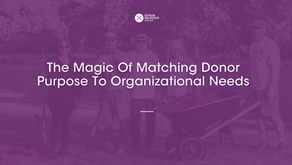Surprise and Delight Your Donors
- Lynne Wester

- Feb 10, 2017
- 2 min read

Credit for this terminology goes to Sue Washburn, founding principal at educational consulting firm Washburn & McGoldrick. Sue tells the story of attending reunion at her alma mater, an institution where she had sat on the board of trustees, served as a consultant, and held numerous volunteer roles. Back on campus she found herself walking with a new gift officer; as they traversed the campus green Sue remarked in passing that her freshman roommate had an uncanny ability to spot four leaf clovers in the grass. They continued walking and Sue didn’t think anything more about it until several days later when she received at her home a lovely note from the gift officer, and enclosed was a four leaf clover. Sue talks about this as being one of the most memorable donor gifts she ever received. It was clear to her that 1) the person she was speaking to was listening, and 2) the gift was meant especially for her.
I’ve repeated this story numerous times when I’ve spoken on donor gifts, and it’s guided me when thinking about how we express appreciation to Skidmore’s donors, especially when it comes to gift giving. Too often there’s the temptation to reach into a closet of university-embossed gift items because we haven’t given thought to what the donor would appreciate. (Doesn’t everyone have a stash of apparel, tote bags, and key fobs with our seal on them?!) It is a running joke among my advancement colleagues that the doorman of a former board chair has the largest collection of Skidmore logo apparel on the East Coast.
Several years ago at a public announcement to recognize the lead gift for Skidmore College’s new residential townhouses, the donor talked about the apartments these would be replacing. Drafty and energy inefficient, they had outlasted everyone’s expectation for their usefulness. As the donor spoke about the need for new campus housing, he said the only positive thing about the old apartments were the times he spent there with his daughter and her friends playing beer pong. Hmmmm. Did you know that there is a national beer pong league? They have special cups, balls, logo apparel, and even rule books! Who knew? I’m confident that we are the only organization to have gifted this generous philanthropist with a bag of beer pong swag, including rule book and membership card. He still talks about it.
In the Four Pillars of Donor Relations Lynne Wester diagrams the Art of Donor Relations. What do donors want? Access, information, experiences. Access starts at the top, with your president or chief executive officer. Every two weeks Skidmore’s president sets aside time on his calendar for what we call the “Hour of Power.” For sixty minutes he writes handwritten notes and makes personal calls to thank donors for their leadership gifts, to recognize a personal or professional milestone, or to otherwise engage. I’ve heard from numerous recipients their “surprise and delight” when they pick up the phone and hear the president’s voice on the line. The impact is tremendous, the financial cost non-existent.
What have you done to Surprise and Delight a donor? What would you do if you had no limits? Tell us your stories here!
My gratitude goes to Mary Solomons, another fabulous member of the DRG Group, for her contribution this week!





